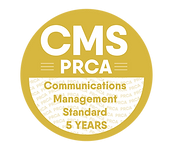How does Colombian peace deal compare to Good Friday/Belfast Agreement?
30 August 2016 - by Quintin OliverThe Colombian Peace Deal with the FARC has been a long time dropping – after fifty years of conflict and, most recently, four years of tough negotiations in Havana. Quintin Oliver looks at the similarities between the Colombian agreement and our own Good Friday/Belfast Agreement.
There are eight uncanny similarities in the upcoming plebiscite across Colombia on 2nd October, with ours of May 1998:
- There will be a focussed, sharp six-week campaign only; partly, like us, to avoid ‘unravelling’, but also presenting challenges in communicating a 20,000 word complex, sometimes ‘constructively ambiguous’, legal-jargon text to a confused and uncertain citizenry;
- The political parties in favour are selling different messages as the Greens argue ‘Adios a las FARC’, (emphasising its defeat), the leftists ‘Si a la Paz’ (expressing the relief of ending half a century of war), and the President promoting his necessary compromises; voters like to see politicians, normally opposed to each other, working together but not in anarchic chaos;
- The No Campaign has a single powerful, charismatic, articulate leader, former President Uribe, who enjoys massive media access as the single spokesperson, but apparently limited depth of support, no NGOs, no artists, no celebrities, no sports stars, no obvious business community backing; he can scatter emotional hand grenades without the responsibility of providing evidence or the potential burden of future implementation; a proposition that ‘a better peace’ can be won, however unrealistic, may gain traction;
- The media are broadly in favour of the deal, as expressed in their editorial stances, but in order to demonstrate ‘balance’ give huge (disproportionate?) airtime to No, whose only leader seems to be Uribe, who can therefore develop consistency, coherence and clarity, against a cacophony of Yes voices, with significantly divergent messaging;
- Civil society has yet to find its voice fearful of the overly ‘political’ fray, uncertain of its legitimate role in the discourse, unclear about the strongest messages and overwhelmed by the domineering politicians of old; nor have the local champions of peace yet emerged, opinion-formers and lightning conductors of appropriate messages;
- Certain crunch issues are toxic in the public space from ‘impunity for wrong-doers’, prisoner release, ‘terrorists in Congress’, land reform, ‘Is the war over?’ and the rights of victims, without the ease of promoting the balancing, yet-to-be-achieved peace dividends;
- The voters who will really benefit from peace are cautious, from the business sector who fear being accused of self-interest, campesinos who fear the residual power of dissidents and spoilers (the ELN has not participated in this peace process, and remain armed and active, keenly recruiting FARC ‘dissidents’), eager to hold their narco-trafficking gains and the burgeoning urban middle classes who have been shielded from the conflict for a decade and forget its pain;
- The FARC (which stands to gain six unelected MPs immediately) will stay quiet during the campaign – or will they? Remember Gerry Adams receiving the specially released Balcombe Street Gang as ‘our Mandelas’ to rapturous applause in the RDS in Dublin, followed only a week later by Michael Stone’s triumphal release into the Ulster Hall’s baying UDA crowds?
Quintin Oliver who ran the ‘YES Campaign’here in 1998 for the Good Friday Agreement, has recently returned from Bogota where Stratagem International www.StratagemInt.com advises on the 2nd October Colombian Referendum – he wrote two seminal referendum pieces in early 2012, before the Scottish poll, which can be found at the links below:
http://sluggerotoole.com/2012/03/08/how-to-win-a-scottish-referendum-%E2%80%93-ten-iron-laws/








